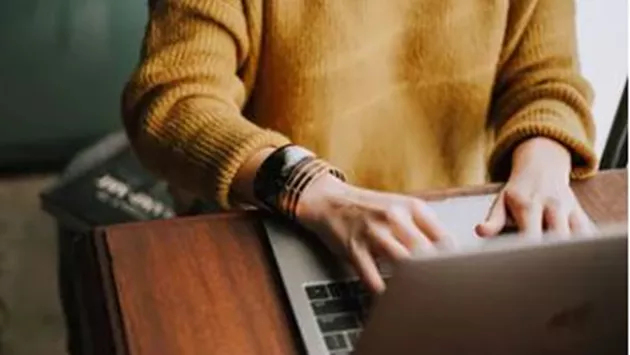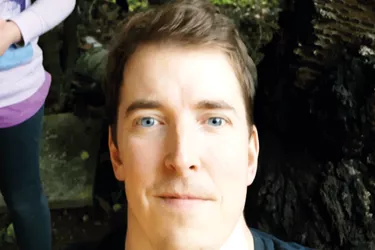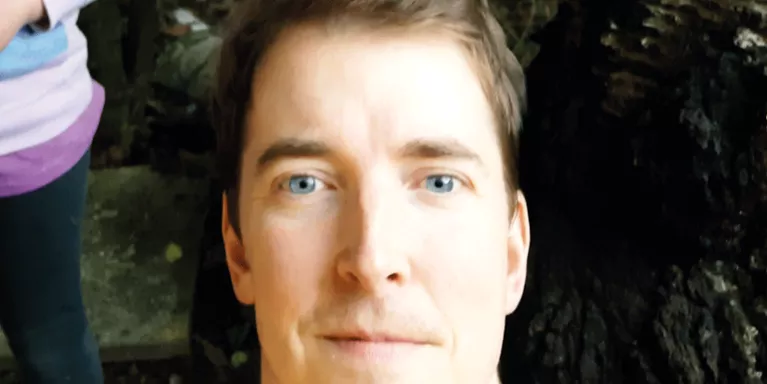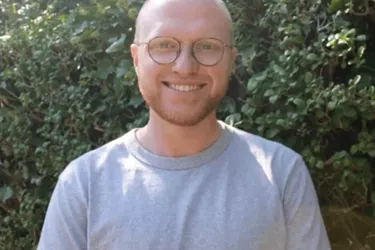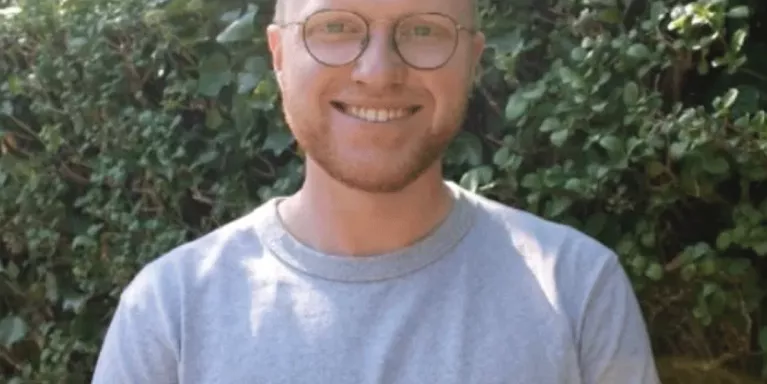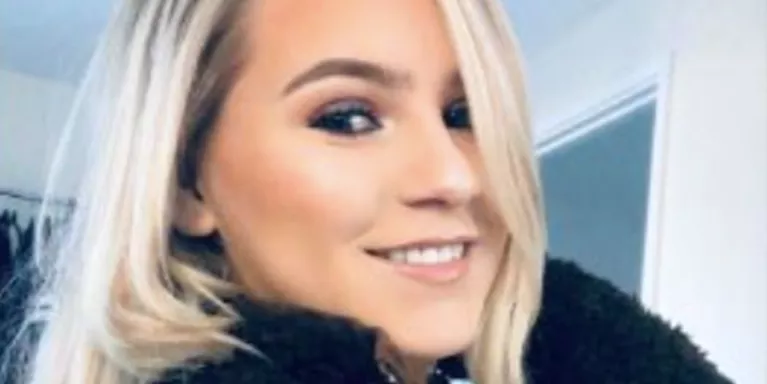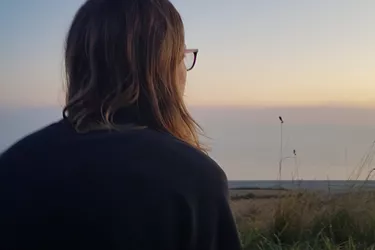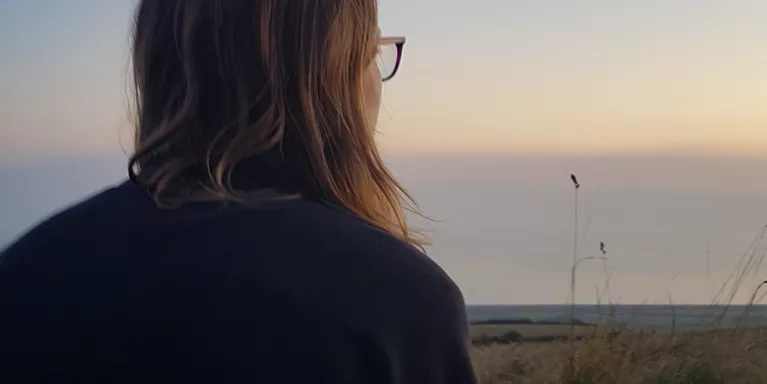How video calls made my BDD worse
Angus blogs about lockdown and digital meetings intensified his body dysmorphic disorder.
I’m standing in the bathroom of my student house on a Friday night, looking in the mirror getting ready to go to a friend’s party.
But the party started two hours ago. My housemates have long since left. I’ve been rooted to the same spot in front of my bathroom mirror for four hours, obsessively, compulsively checking and re-checking my hair from every possible angle to see if I’ve done a good enough job of hiding my receding hairline.
My brain is in whatever state comes after overdrive –a light-headed, out-of-body experience in which you’ve lost grip of rationality and reality. Intrusive thoughts and images are coming so frequently that they’ve melded together into a self-critical cacophony. ‘You look disgusting. Has it got worse since yesterday? Why has this happened to me? Oh my God is that a grey? Is it even that bad? Maybe it’s not receding at all? No one will ever find you attractive.You can’t possibly go to a party looking like that.
Panic attacks
Needless to say, I don’t make it to the party. My night ends with a panic attack followed by frantic hair transplant research in bed before my body finally decides enough is enough. At 1 am I fall asleep sitting up.
Between the ages of 17 and 22, this was how things tended to play out for me any time I was meant to be going out. It never crossed my mind that this level of checking was not ‘normal’, that it was a sign of a mental health condition.
Only after describing my struggles to a psychologist following a breakdown during a university seminar did I hear the term ‘body dysmorphic disorder’, or BDD for short.
I am constantly worrying about my appearance to the extent that I rarely feel present in any social situation.
Mind defines body dysmorphic disorder (BDD) as ‘an anxiety disorder related to body image’, in which you might ‘experience obsessive worries about one or more perceived flaws in your physical appearance’. You then develop compulsive behaviours and routines, such as excessive use of mirrors or picking your skin, to deal with the worries you have about the way you look.’
I am constantly worrying about my appearance to the extent that I rarely feel present in any social situation, and I am performing exhausting, compulsive rituals that simply perpetuate this cycle of anxiety. It’s like being stuck in a noisy hamster wheel spinning endlessly inside a hall of mirrors.
Since beginning to receive help in the form of medication and weekly therapy about two years ago, as well as letting my friends and family into my struggles, my hamster wheel has started to slow down. In my more lucid moments, I am now able to see that the intrusive thoughts I have are neither rational nor reality, but rather my BDD talking. I now employ a variety of techniques learnt from Cognitive Behaviour Therapy (CBT) and mindfulness to ride out the waves of panic. I have shaved my head, and allow myself just 10 minutes in front of the mirror every day before work.
At the beginning of last year, I was in perhaps the best place I’d ever been. I had just got back from the trip of a lifetime to Vietnam and was feeling, dare I say it, relatively positive about the way I looked. More importantly, I was starting to believe that my looks were not the be all and end all of life. I no longer felt the need to compare myself to Ryan Reynolds.
Becoming fixated by ‘self-view’.
During my last days in Vietnam, I began to hear whispers about a virus that was causing chaos in parts of nearby China. Fast forward to today, and COVID-19 has claimed the lives of millions. On top of this, the lockdowns necessitated by COVID have caused my struggles to resurface in a way I never could have expected.
My life became defined by endless video calls and by a small window in the top right-hand corner of my screen. ‘Self-view’. At first, I paid little attention to my own face staring back at me during meetings with colleagues at the charity I work for, but I soon found myself becoming fixated by this little digital mirror.
Self-view became the centre of my focus during meetings. You might be thinking, ‘You could have just turned it off’. But my BDD made me unable to resist keeping constant tabs on how I was looking.
Having been almost two years free of compulsive checking, it was now back with a vengeance. My mirror marathons returned even though I could not go out. The websites of hair transplant clinics once again began to populate my internet history. I felt myself sinking back into the depression that accompanies my negative beliefs.
It’s as if other people’s faces have now become a mirror in which I see myself reflected back.
Since lockdown has eased, and face-to-face interactions have become part of life again some surreal thinking habits have crept into my life after from living life on camera for so long. When I speak to people face to face, I now see a video playing in my head of myself as I think I must appear to the other person while we’re talking. It’s as if other people’s faces have now become a mirror in which I see myself reflected back. This has made adjusting to ‘more normal life’ incredibly difficult.
Fortunately, for me, I now have the support structure to cope with this wobble. With hard work and rigid commitment to my coping techniques, I feel I can return to near where I was at the beginning of last year relatively soon. I am lucky to have this structure to help me.
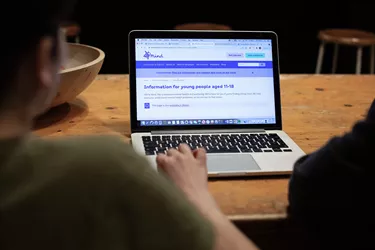
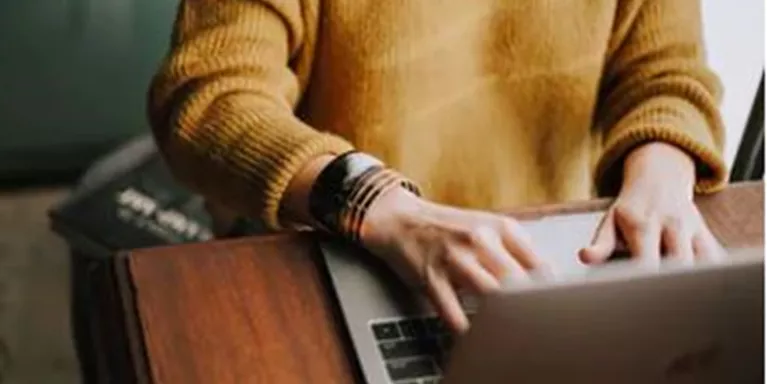
Information and support
When you’re living with a mental health problem, or supporting someone who is, having access to the right information - about a condition, treatment options, or practical issues - is vital. Visit our information pages to find out more.
Share your story with others
Blogs and stories can show that people with mental health problems are cared about, understood and listened to. We can use it to challenge the status quo and change attitudes.









